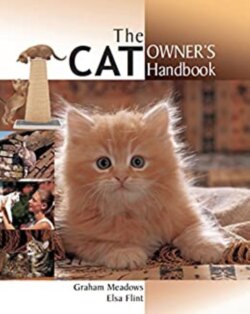Читать книгу The Cat Owners Handbook - Graham Meadows - Страница 10
На сайте Литреса книга снята с продажи.
The taming of the cat
ОглавлениеIt has been suggested that during the process of domestication a genetic change to wild temperament (a ‘domestication mutation’) must have occurred to reduce the wild cat’s innate aggression and make domestication possible. The basis for this reasoning is that in wild cats tameness (lack of aggression) is not inherited; although individual animals can be tamed, their kittens are born with a wild temperament and in their turn must also be tamed. In the domestic cat, kittens inherit tameness from their mother – therefore, the reasoning goes, some genetic change must have occurred in the domestic cat to cause this.
A lioness (Panthera leo) is forever vigilant, watching for potential danger to her cubs, even when they are no longer tiny and hopelessly vulnerable.
The idea of a domestication mutation is intriguing, for its exponents suggest that when this occurs it prevents the development of certain adult behaviour patterns, with the result that adult animals still retain some juvenile behaviours. Retaining these behaviours makes them better suited to domestication.
The term for this is neotony, and it functions as follows. In the wild, adult cats are solitary. A close-knit ‘family’ group is formed when a female gives birth to and rears her kittens, but once the kittens become independent there is no continuing association, and each individual becomes a ‘loner’.
Domestic cats, on the other hand, behave rather differently. They are more gregarious, and the suggestion is that this is because they retain some of their ‘kittenish’ instinct to keep together. There are several examples to demonstrate this. If the owner of a female cat that has given birth to kittens decides to keep one or more of those kittens once they have been reared, the mother and offspring will often form close family bonds.
Even when domestic cats are feral, their families tend to stay together, while in urban areas, where there are comparatively dense domestic cat populations, unrelated adults will often form loose associations. Groups of them may even meet together at certain times of the day for ‘cat conferences’, which seem to be the cat equivalent to humans ‘hanging out’ together.
Neotony could arise from a genetic mutation, but it could also result from the process of human selection. People would choose to keep and breed the cats that were the easiest to manage. Those displaying juvenile characteristics were more family-oriented and less independent than adults, and therefore more suited to life within a human family.
Neotony is not just a characteristic of domestic cats. It occurs in domestic dogs, too, where adults retain certain puppy characteristics that make it easier to integrate them into a human family.
Whether such a genetic change occurred, and if so, when, we shall never know. We can only surmise that people kept the kittens of wild cats, and that some of these (probably females) proved tame enough to keep to adulthood and breed from. Eventually, for various reasons, kittens were born that were less aggressive and more suited to living with humans.
The origin of the Russian Blue is uncertain. It is said that sailors brought back specimens to Britain from the northern Russian port of Archangel.
Nevertheless, the domestic cat’s wild temperament is only just below the surface, and not all cats show the same degree of ‘tameness’. There is a wide range of temperaments within the domestic cat population – some cats are extremely tame and others have a definite wild streak. Also, lack of aggression in domestic cats needs to be reinforced by human contact from an early age. If it is not, then some of the cat’s wild attributes reappear. For example, kittens born to a domestic cat that has gone feral are distrustful of humans, and must be subjected to at least a basic taming process in order to adapt to living in a human home.
